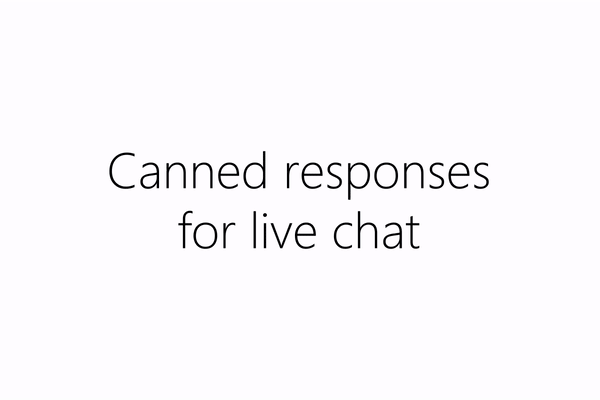How to Deal With Difficult Customers
Learn how to deal with different types of difficult customers to improve your customer support.
Customer relationships are essential for every business. A strong rapport with clients can lead to repeat business, positive reviews, and helpful word-of-mouth. However, even if you handle things well 99% of the time, you will inevitably deal with difficult customers at some point.
According to DriveResearch, 91% of customers claim that they won't willingly do business again with a company that left them unhappy previously.
Dealing with difficult customers involves skillfully handling stressful and challenging situations to find a satisfactory resolution for all parties involved. Although it can be a challenging aspect of customer service, it's crucial for the long-term success and reputation of the business.
In this article, we'll share tips on how to deal with difficult customers and provide some example phrases you can use to de-escalate things professionally.
Why Is Dealing With Difficult Customers Important?
Effectively handling difficult customers (versus consumers) is not just about resolving a single issue. When you navigate a complicated interaction successfully, you accomplish several things. First, you uphold the company's reputation for quality service, which is always good for business. Second, skillful handling can often turn a difficult customer into a satisfied one, who may even become a repeat customer.
In today's digital age, customer experiences are easily shared through social media and review sites. A poorly handled situation can spread quickly online and potentially harm the business. Conversely, resolving a challenging customer situation well can lead to positive reviews and strong word-of-mouth recommendations.
Reducing customer churn is a key business goal for many businesses, as it leads to improved customer relationships and increased sales.
Join thousands of support teams who are using Text Blaze templates.
What Makes a Customer "Difficult"?
A difficult customer can be like a puzzle that needs solving. Sometimes they're unhappy with the product or service, and other times they're just having a bad day and taking it out on you. In either case, these customers can make your job more complicated and stressful. These types of interactions can demand more of your time and attention than the average customer.
Communicating with difficult customers can be particularly tough. They might be aggressive, demanding, or even rude. These customers might ask multiple questions, interrupt, or use a confrontational tone. Regardless of the challenge, the goal remains the same: resolve the issue while maintaining a high level of professionalism. Professional customer service responses are not just important, but necessary.
Read on below to learn about the different types of difficult customers, and how to handle them.
Types of "Difficult" Customers With Examples
Demanding Customers
A demanding customer wants solutions, and they want them now. They're not interested in excuses and can be incredibly impatient. For example, they might say, "I don't care about your policies; I want this resolved immediately!" They may even ask for supervisors or managers when they feel their demands aren't being met.
How to Handle Demanding Customers: With demanding customers, clarity and speed are key. Acknowledge their urgency and work diligently to provide a solution. Make sure to explain the steps you're taking so they understand you're actively addressing their issue.
Challenging Customers
Challenging customers are the skeptics who question everything you say. They may ask for more information, demand proof, or try to catch you in a mistake. For instance, they might challenge you with, "Are you sure that's the best you can do? Show me your policy that says that." They're often hard to please because they come into the interaction with a degree of suspicion.
How to Handle Challenging Customers: For challenging customers, information and patience are your best tools. Provide the details or documentation they're asking for. Validate their concerns but stick to the facts and company policy.
Indecisive Customers
Indecisive customers are unsure about what they want, making it difficult to assist them effectively. They might waver between options, asking multiple questions without making a final decision. For example, they might say, "I don't know if I should go with this model or that one. What do you think?" They can be time-consuming as they often require extra guidance and reassurance.
How to Handle Indecisive Customers: Assist indecisive customers by simplifying options and offering professional recommendations. Try to steer them toward a decision by outlining the benefits and drawbacks of each option.
Angry Customers
An angry customer is upset about something and wants you to know it. Their emotion is at the forefront of the conversation, often making it difficult to get to the root of the problem. For instance, they may say, "This is ridiculous! I can't believe you people messed this up!" They might raise their voice, interrupt, or make demands, putting you on the defensive.
How to Handle Angry Customers: The first step is to let them vent; sometimes people just want to be heard. Acknowledge their feelings without admitting fault until you know more about the situation. Offer solutions after they've cooled down a bit.
How to Deal With Difficult Customers (10 Tips)
Tip 1: Stay Calm
First and foremost, keep your cool. When faced with a challenging customer, it's easy to get emotional, but that rarely solves anything. Take deep breaths and keep your voice steady. Remember, you're the professional in this situation.
Example: A customer yells at you over the phone for a delayed shipment. Instead of raising your voice in response, you take a deep breath and calmly explain the situation, assuring them that you're working on it.
Staying calm not only helps you think more clearly but also has a calming effect on the customer. When they see you're not agitated, there's a good chance they'll dial down their own emotions.
Tip 2: Listen Carefully
Listening is a skill that can't be overstated. Let the customer speak without interruption. Often, they just want to be heard.
Example: A customer is upset because they received the wrong item. Let them finish their complaint before speaking. Then, summarize what you've heard to show you understand.
After they've had their say, summarize what you've heard. This shows the customer that you've been listening and that you understand their concerns.
Tip 3: Apologize Sincerely
Even if the customer's complaint isn't your fault, a sincere apology can go a long way. It shows that you empathize with their situation.
Example: Even if the wrong item wasn't your fault, apologizing sincerely can disarm many angry customers. Saying, "I'm really sorry for the inconvenience this has caused you," can go a long way.
Say something like, "I'm really sorry you're experiencing this issue." It's a simple but powerful way to start smoothing over the situation.
Tip 4: Don't Take It Personally
It's hard not to feel attacked when someone is yelling or complaining, but try not to take it personally. Remember, they're upset with the situation or the company, not specifically with you.
Example: A customer says, "You people are incompetent." Remember, the complaint is directed at the service or product, not you personally.
Keeping a level of detachment can make it easier to find a rational solution. It also makes the experience less stressful for you.
Tip 5: Offer Solutions
Once you've identified the problem, offer a solution. Make sure it's one that you can deliver on; don't promise things that can't be done.
Example: A customer is unhappy with the quality of a product. Offer a refund or replacement, stating, "I can offer you a full refund or send you a new product right away."
If the customer rejects your first solution, try to offer an alternative. The key is to work together to find a compromise that satisfies both parties.
Join thousands of support teams who are using Text Blaze templates.
Tip 6: Know When to Escalate
Sometimes you've done all you can, and the customer is still unhappy. Recognize when it's time to escalate the issue to a manager or another department.
Example: A customer insists on getting a discount that your company doesn't offer. After trying to offer alternatives, realize it's time to pass them to a manager.
This isn't a failure on your part; some situations require higher-level intervention. Make the transition smooth by informing the customer that you're transferring them to someone who can better assist them.
Tip 7: Follow Up
After the issue is resolved, always follow up. A simple email or phone call asking if everything is okay can make a world of difference.
Example: After resolving a billing issue, send an email to confirm all the details and ask if there is anything else you can assist them with.
This final step shows the customer that you care about their experience from start to finish, increasing the chances they'll come back in the future.
Tip 8: Use Positive Language
The words you use can make a big difference in how a customer reacts. Try to turn negatives into positives whenever you can.
Example: A customer says, "Why does your website always crash?" Instead of saying, "I don't know, our website has issues," try, "I understand how that can be frustrating; we're constantly working to improve our site's reliability."
Using positive language reframes the conversation and shows that you're focused on resolving the issue rather than dwelling on the problem.
Tip 9: Set Boundaries
Sometimes customers will have unrealistic expectations or demands. In these cases, it's important to set clear boundaries to manage those expectations properly.
Example: A customer demands immediate resolution on a complex issue that takes time to fix. Politely say, "I understand the urgency, but it may take up to 24 hours to thoroughly resolve this. I promise to keep you updated."
Setting boundaries helps manage the customer's expectations and protects you from promising something you can't deliver.
Tip 10: Learn from Each Experience
Every interaction with a difficult customer is a learning opportunity. Take a moment after each difficult encounter to think about what worked and what didn't.
Example: After a tough call, take a moment to reflect. What went well? What could you do differently? Use these reflections to improve future customer interactions.
Learning from each experience can help you better handle difficult customers in the future, making you a more effective and confident customer service agent.
Things to Say When Dealing With Difficult Customers
Effective communication is key when you're dealing with difficult customers. Your words can either escalate the situation or pave the way for resolution. The focus should be on using professional, courteous language that shows you're actively listening and working on solving their issues.
"Thank you for bringing this to our attention; let's see how we can resolve it."
"I understand why you'd feel that way; it's a valid concern."
"May I suggest a possible solution?"
"I'm sorry you're experiencing this issue; let me make it right."
Using phrases like the ones above that maintain professionalism and courteous language, you can effectively deal with difficult customers.
Customer support canned responses are useful phrases that can be used often to quickly respond to customers professionally.
How to Stay Professional When Dealing With Difficult Customers

Staying professional is the key to resolving most difficult customer interactions. In order to maintain professionalism when chatting with difficult customers, use Text Blaze.
Text Blaze helps you create smart text templates that work anywhere online and insert them using keyboard shortcuts. With Text Blaze, you can create templates for common support messages/emails to help you:
- respond to customers faster
- provide high-quality customer support
- deal with difficult customers professionally
- get the message right every time
Whether you want to automate repetitive phrases, common support messages, or support ticketing/escalation, Text Blaze helps you do it faster!
Text Blaze is free forever, which means you can use Text Blaze to automate repetitive typing forever without ever paying for a subscription!
Join thousands of support teams who are using Text Blaze templates.
Deal With Difficult Customers With Ease!
Dealing with difficult customers is an inevitable part of customer service. Though challenging, it's essential for maintaining a business's reputation and customer satisfaction. By staying calm, listening carefully, and proposing viable solutions, you can turn a stressful encounter into a constructive one.
Use Text Blaze to automate repetitive typing, create customer support response templates, and effectively deal with difficult customers professionally today!




